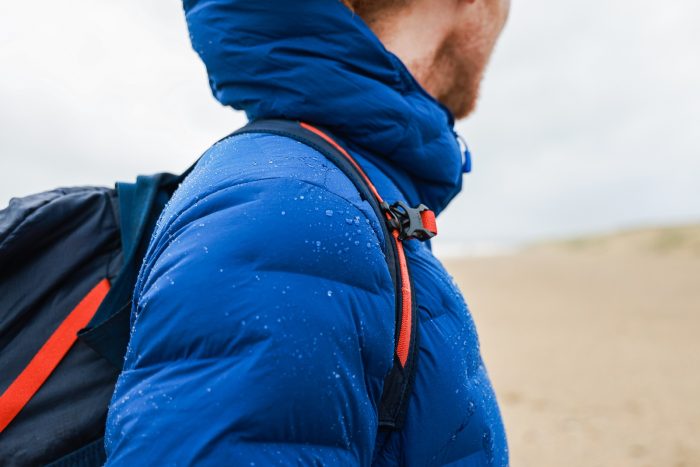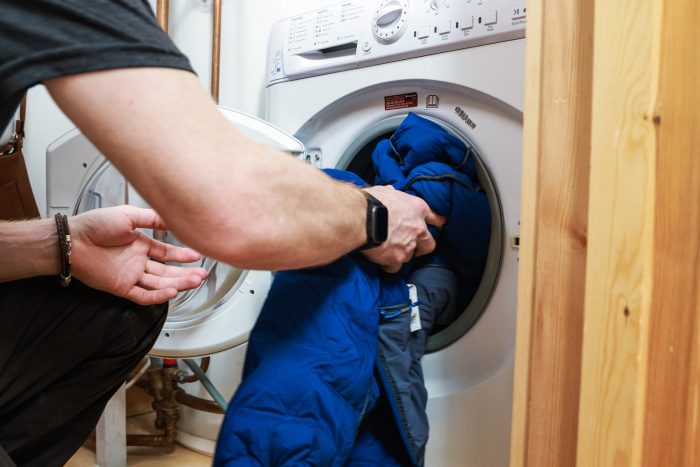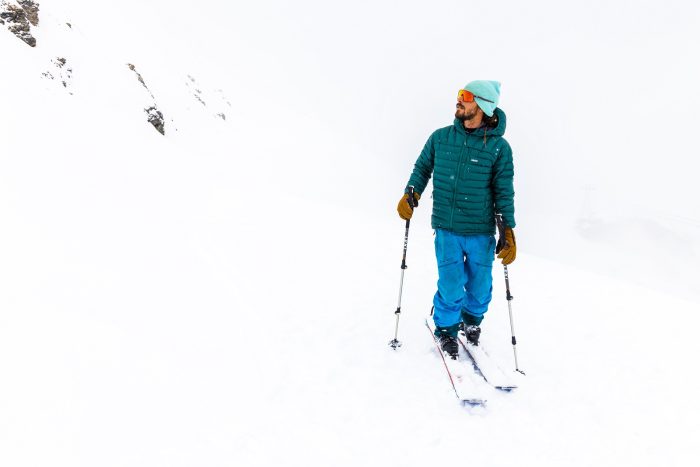5 key pieces of advice on how to choose and care for a down jacket…

It’s been a warm start to winter but now the weather is getting colder you can officially start the search for a new, cosy jacket if your current one has reached the end of its useable life with you. There is nothing worse than feeling the chill in plummeting temperatures and down reigns supreme for its ability to keep you insulated. There are several key things to consider when purchasing a down jacket – far more than just style, colour and fit! Check out our tips on how to make the best choice for your needs…
1. Think carefully about the activities you will use your down jacket for…
Consider the environment you will be wearing your down jacket in and the level of activity you undergo. Will it be for daily use, such as dog walking, the school run, or travelling to work? Or will it be for occasional use whilst walking or hiking? Perhaps you have a climbing or skiing trip to look forward to, or even a winter camping expedition…
High energy activities warrant a down jacket that is lightweight, won’t restrict your movement, and won’t cause you to overheat when working hard. Less strenuous activities suit a thicker down jacket.

2. Pay attention to fill power & weight…
This is the terminology used to describe the volume of down when it is fully lofted (at its fluffiest!). A jacket with a higher fill power means the down clusters take up more space and therefore trap more air, which equates to a higher warmth-to-weight ratio (900-fill power is a better insulator than 550-fill power).
However, be aware that a high fill power doesn’t always result in a super warm down jacket. It also depends on the amount of down used. For example, an item that has 150g of 700 fill power will be less warm than an item with 300g of 550 fill power.
The benefit of lighter items is that they can be compressed down and stored away, which is useful for mountain activities where space-saving is key.
Down filled gear should always display a fill power rating so be sure to check before you buy:
|
|
3. Understand the difference between natural down and synthetic fibres…
Down is an excellent insulator because it traps air between its fibres, which is what makes you feel warm and cosy, whilst being easy to compress and pack down small. However, it is susceptible to rain and snow, and down jackets that are not treated will absorb water, resulting in the down clumping, becoming heavy, and making you cold from loss of loft and insulation. It can also take a long time to dry out a down garment and restore its loft. Hydrophobic down is regular down that has been treated with a water repellent coating, meaning it has an improved ability to deal with moisture.

Synthetic fill is cheaper than down and easier to clean. However, it tends to make a jacket heavier and (sometimes) bulkier than one containing down fill. Synthetic fill is less susceptible to moisture so could be considered better for use in wet conditions. However, the jacket will not be as warm as down and may be harder to pack away if needed. It is a good solution if you suffer from allergies.
4. Buy your down jacket responsibly…
The Responsible Down Standard (RDS) aims to protect ducks and geese used for down, by incentivizing the down and feather industry to treat these animals humanely; allowing companies to know what’s in their products so they can report truthfully to consumers, and rewarding those organizations leading the way.
The key factors:
- Live plucking is prohibited
- Force-feeding is prohibited
- Respect for the animals’ welfare, from hatching to slaughter is in place
- RDS down and feathers are identified (ensuring non-RDS down is not mistaken for RDS-certified)
- Each stage of the supply chain is audited by third party certification
- Only products containing 100% certified down can carry the RDS logo.
5. Care for your down jacket with specialist products…
Down items require expert care to keep them performing at their best time and again; definitely do not put them in the wash with normal detergents, as these can damage the down by leaving hydrophilic (water-attracting) residues on the fabric and fill.

Nikwax Down Wash. Direct® has been created specifically for hydrophobic and regular down filled gear. It thoroughly cleans and removes all dirt and contaminants that have built up on both the outer fabric and down fill of your jacket, whilst reviving its breathability and insulation. In the case of hydrophobic down, it also revitalises the durable water repellency (DWR).
When it is time to re-proof your down jacket (when water no longer beads up and runs off it) we recommend you use Nikwax Down Proof, our high performance wash-in waterproofer. It adds DWR to the fabric and down fill, and improves the natural, insulating properties of down.
All Nikwax products have been formulated for use in a washing machine, making your life easier! After washing your down jacket on a gentle cycle and spin drying it, we recommend a tumble dry. Down jackets should never be left wet, which risks permanent damage to the delicate down fill.


Leave a Reply